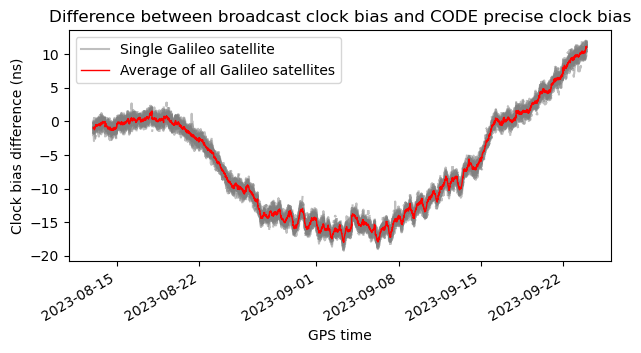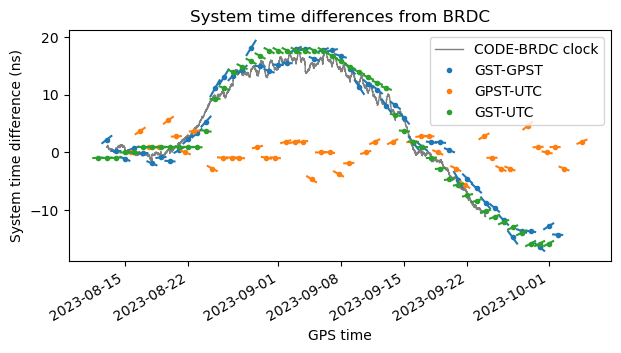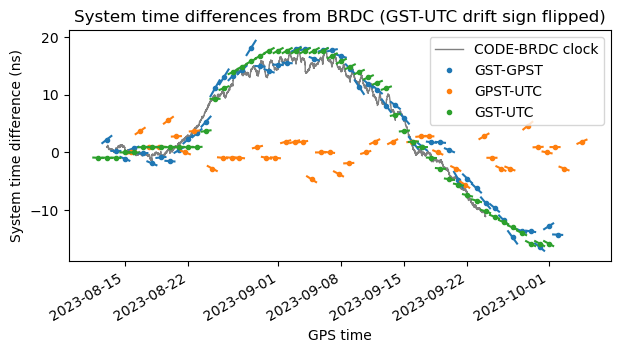At the beginning of September I wrote about an ongoing anomaly in the offset between the GST (the Galileo System Time) and the UTC timescales. This short post is an update on this problem, with new data and plots.
For this post I have only used final solutions for the CODE precise clock biases. I have replaced the rapid solutions that I used in the last post by their final versions. The data under analysis now spans from day of year 225 (2023-08-13) to day of year 266 (2023-09-23).
The plot of the difference between the broadcast clock biases and the CODE precise clock biases now has the following aspect. Comparing with the previous post, we see that the difference has stayed around -15 ns until 2023-09-08, and then it has started increasing towards zero, but it has overshoot and it is at around 20 ns by 2023-09-23.

The plot of the system time differences in the broadcast messages is also quite interesting. For this I am using the IGS BRDC data until day of year 275 (2023-10-03). Recall that it appeared that the GST-UTC drift had the wrong sing, because it was clearly increasing but the drift had negative sign. Now the situation looks more complicated. Though it appears that the drift has the wrong sign around 2023-08-28 and 2023-09-22, there is also a segment around 2023-09-08 where the sign looks correct. Additionally, around 2023-09-01 the sign should be close to zero but is not.

For comparison, here is the same plot with the sign of the GST-UTC drift flipped. Arguably, the drift gives a better match most of the time, but certainly not around 2023-09-08. Therefore, the problem with the modelling of the GST-UTC drift in the Galileo broadcast message looks more complicated than just the sign bit being wrong.

The updated Jupyter notebook and data is in this repository.